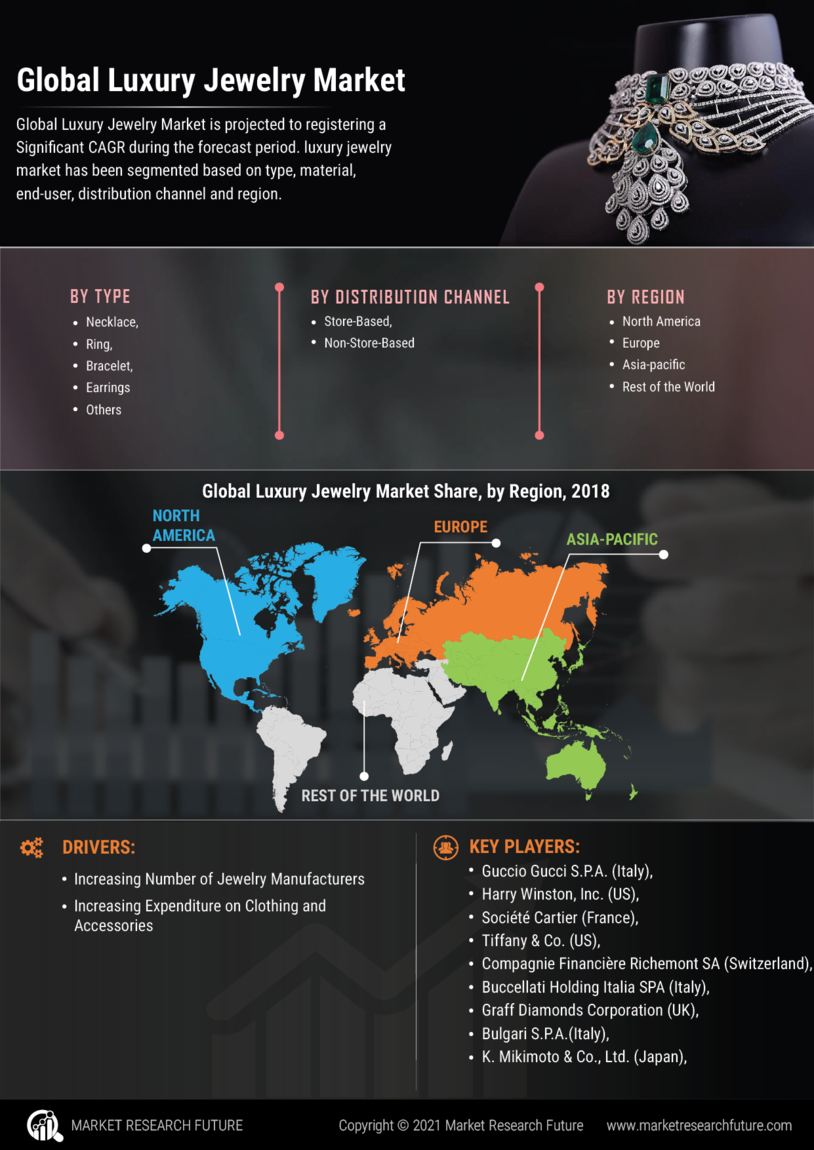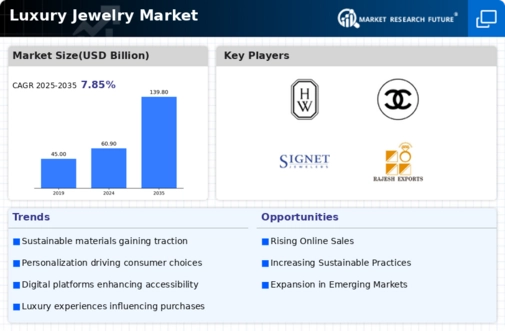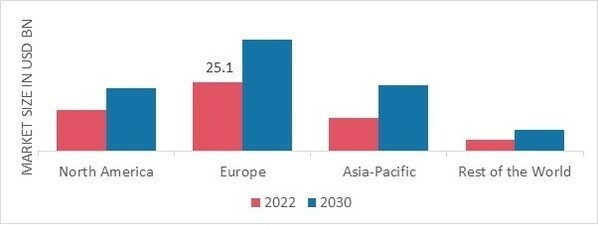Market Growth Projections
The Global Luxury Jewelry Market Industry is poised for substantial growth, with projections indicating a market size of 60.9 USD Billion in 2024 and an anticipated increase to 139.8 USD Billion by 2035. This growth trajectory suggests a robust demand for luxury jewelry, driven by various factors including consumer affluence and evolving preferences. The market is expected to experience a compound annual growth rate of 7.85% from 2025 to 2035, indicating a strong and sustained interest in luxury jewelry. These projections highlight the potential for brands to capitalize on emerging trends and consumer behaviors, positioning themselves strategically for future success.
Evolving Consumer Preferences
Consumer preferences in the Global Luxury Jewelry Market Industry are evolving, with a marked shift towards personalized and unique pieces. This trend indicates that consumers are increasingly seeking jewelry that reflects their individuality and personal stories. Brands that offer customization options or limited-edition collections are likely to thrive in this environment. The rise of social media platforms also plays a crucial role, as influencers and celebrities showcase distinctive jewelry styles, driving consumer interest. This shift in preferences suggests that the market will continue to expand, potentially reaching 139.8 USD Billion by 2035, as brands adapt to meet the desires of discerning customers.
Growing Affluence of Consumers
The increasing affluence of consumers globally appears to be a primary driver of the Global Luxury Jewelry Market Industry. As disposable incomes rise, particularly in emerging markets, individuals are more inclined to invest in luxury items, including high-end jewelry. This trend is evident in regions such as Asia-Pacific, where a burgeoning middle class is driving demand. In 2024, the market is projected to reach 60.9 USD Billion, reflecting a growing appetite for luxury goods. Furthermore, as wealth concentration continues, the luxury jewelry sector is likely to see sustained growth, appealing to affluent consumers seeking exclusivity and status through their purchases.
Expansion of E-commerce Platforms
The expansion of e-commerce platforms is reshaping the Global Luxury Jewelry Market Industry, providing consumers with unprecedented access to luxury brands. Online shopping has become increasingly popular, particularly among younger consumers who value convenience and variety. Luxury brands are investing in their online presence, offering exclusive online collections and personalized shopping experiences. This shift is not only broadening the customer base but also facilitating global reach, allowing brands to tap into new markets. As e-commerce continues to grow, it is expected to play a crucial role in the market's expansion, further driving sales and enhancing brand visibility.
Sustainability and Ethical Sourcing
Sustainability and ethical sourcing are becoming pivotal factors in the Global Luxury Jewelry Market Industry. Consumers are increasingly aware of the environmental and social impacts of their purchases, leading to a demand for responsibly sourced materials. Brands that prioritize ethical practices, such as using conflict-free diamonds and recycled metals, are likely to resonate with conscientious consumers. This trend not only enhances brand reputation but also aligns with the growing global emphasis on sustainability. As a result, the market may experience accelerated growth, as consumers gravitate towards brands that reflect their values, thereby influencing purchasing decisions in the luxury jewelry sector.
Technological Advancements in Design and Production
Technological advancements in design and production are significantly influencing the Global Luxury Jewelry Market Industry. Innovations such as 3D printing and computer-aided design allow for intricate and unique jewelry creations that were previously unattainable. These technologies enable brands to streamline production processes, reduce costs, and enhance creativity, thus appealing to a broader audience. Moreover, the integration of augmented reality in retail experiences allows consumers to visualize jewelry pieces in real-time, enhancing engagement. As these technologies continue to evolve, they are likely to drive market growth, contributing to an anticipated CAGR of 7.85% from 2025 to 2035.






